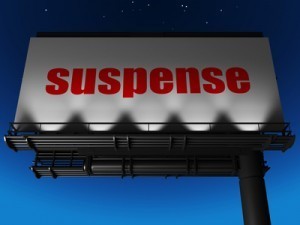Creating Suspense in Writing
For freely offered writing Resources go to RuthFordElward.com
CREATING SUSPENSE IN WRITING
When it comes to writing a novel, it’s important to have clear thoughts on what you want to happen. From your character interactions and strife to the conflicts that drive the story and finally to the resolution of issues.
This must be done in a way that makes both the characters and the reader grow.
Ultimately, by the end of the novel, the character/s should have gone through several steps from the onset of the conflict to the resolution, creating doubt to whether the character/s will be able to finish what they started.
The climax and resolution completes a part of or the entire story and should show that the character has learned a lesson from the ordeal.
The conflict which is an element of a plot, is an important part of the story, therefore, it needs to be well thought out.
During the concept phase of the story, you will have undoubtedly hashed out the main characters and what they will be doing throughout (you did do this, right?) but what about the payoff?
Unless you are trying to write the next big epic, you can find conflict and resolution from just about any experience in life.
Here is a very simple example:
• Story: Boy meets girl in a bistro and they agree to meet again. She gives him her number but he loses it on the way home.
• Conflict: How can he find her if he does not have her number? This is the girl of his dreams and he will be miserable without her.
• Resolution: He retraces his steps, asks people in the bistro who she is, looks online and
eventually finds her number.
Another great plot/outlining device (which NEVER fails to keep your book’s pace going strong) is to actually use a screenwriting plotting device (called the Beat Sheet…goggle it).
The suggestions given in the template can help you logically come to a great ending. This is due in large part to the fact that you have laid the groundwork for the ending to come to a logical and satisfying end (even with those that have a twist).
Simple day to day events can turn into conflict and resolution in a story. They need to be compelling, make the reader ‘feel’ for the character and ultimately follow the character through the journey to discover the meaning and payoff.
As a writer, your job is to build the suspense and the anticipation, which will ultimately be the moment in the story where the character overcomes adversity and in so doing triumphs, in this case he gets the girl and lives happily ever after.
Build the suspense leading up to the climax. In short, the climax is when the conflict of the plot of the story is resolved.
So, the conflict is whatever is keeping your character from achieving his or her goal and the climax is facing that conflict, overcoming it (resolving it) and growing as a person in the process.
In short…what does your character want, and why are they not being allowed to get it?
How will they eventually get it?
And what will happen to them as a result of them getting it?
Remember…whatever the problem is at the beginning of the book needs to be somehow resolved by the end…even in a series book.
Ruth Ford Elward's Blog
- Ruth Ford Elward's profile
- 9 followers



